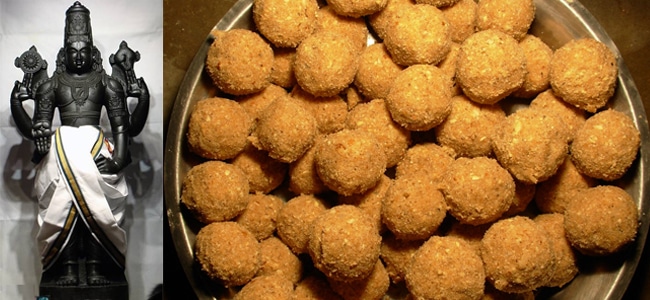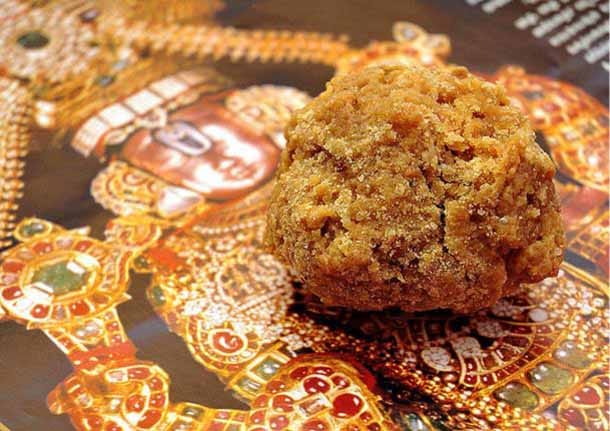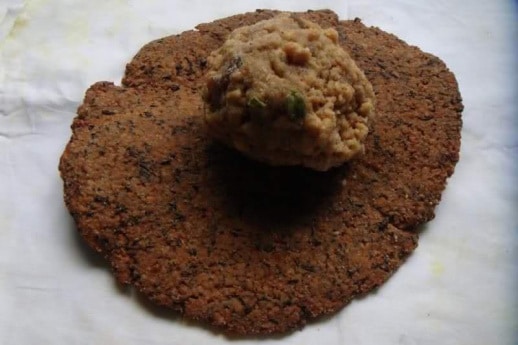The melt-in-mouth texture, the toasty overtones, a mouthwatering aroma and the hint of sweet crunch in every other bite – if you haven’t eaten the Tirumala Tirupati Laddoo, your taste-buds are missing out on a truly divine experience!

Also known as the SriVari Laddu, this iconic sweet is a trademark prasadam/naivedhyam offered at Tirumala Venkateswara Temple in Tirupati, Andhra Pradesh. Arguably declared as the best temple sweet served to devotees, the laddoo has been celebrated for over 300 years. The popularity and mysteriously delicious quality of the sweet led the Tirumala Tirupati Devasthanams to register for a patent and received the Geographical Indication tag in the year 2009. The TTD is an independent trust which manages the famous Tirupati temple and is the only authority in the world to prepare, serve and sell the delectable sweet.
So, what is it that makes this laddoo so extraordinary? To begin with, this treat was invented during the reign of the Pallava dynasty. The laddoo is even mentioned in inscriptions dating back to the 1480s when it was known as “manoharam”. Originally, the latter was served in a loose, chunky form. Over time, the ingredients of the sweet underwent up to six changes throughout the history before attaining its present ball form under the 1940 Madras Government.
Secondly, the preparation of the sweet is an art that demands perfect measurements and dedicated culinary expertise.
The shelf life of these laddus may go up to 10-15 days if preserved properly in airtight containers.
Dittam: Ingredients That Create the Unmatched Taste

At present, the key ingredients of the Tirupati Laddoo comprise of the following, per day!
- Gram flour- 10 tones
- Cashew nuts- 700 kg
- Pure ghee- 500 liters
- Sugar- 10 tones
- Cardamom- 150 gm
- Sugar candy- 500 kg
- Raisins- 540 kg
The Laddu Potu
The unique laddoo has a dedicated kitchen called Laddu Potu within the temple. The potu is equipped with three conveyor belts carrying the ingredients inside and transporting the finished sweets to the selling counters. Originally, all the preparations in the potu were carried out on firewood. That was replaced by LPG in the year 1984.
Preparing an average of 150,000 laddoos daily, the Laddu Potu actually has a capacity to raise this number to 800,000 per day.

The allure of Tirupati must have heightened for all the foodies out there. Would you visit the temple for a taste of this mouthwatering treat? Let us know what are your favorite prasadams from across India!

